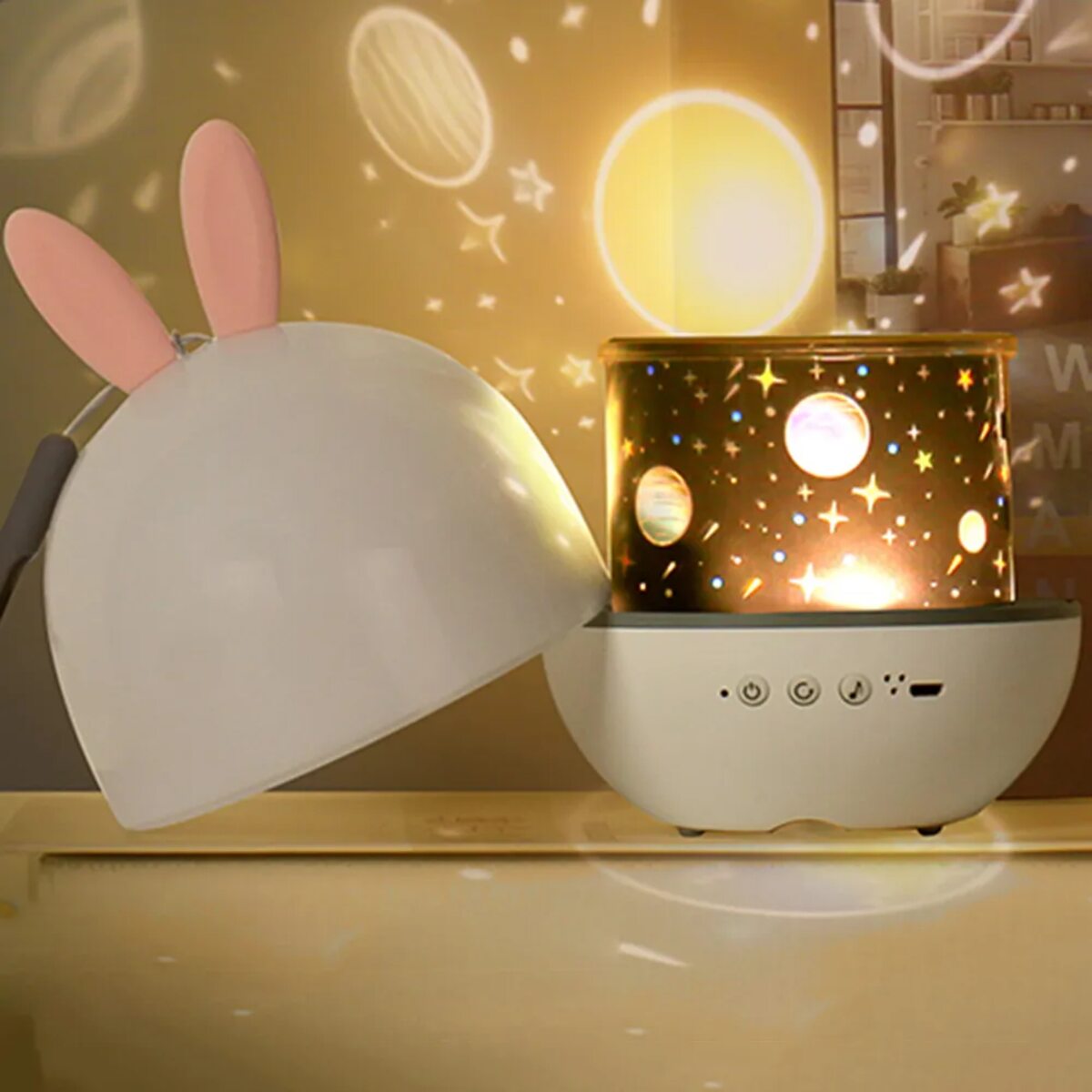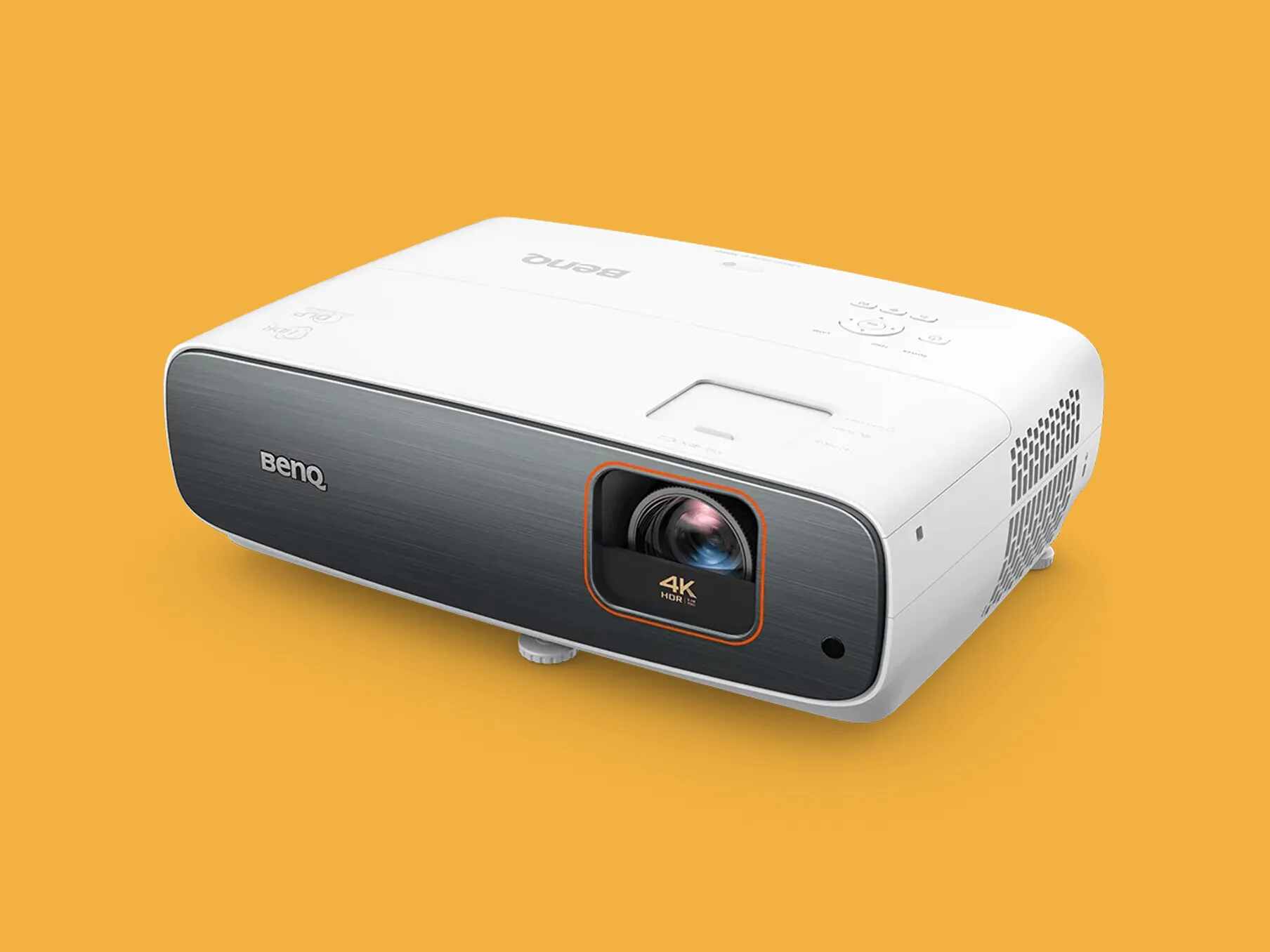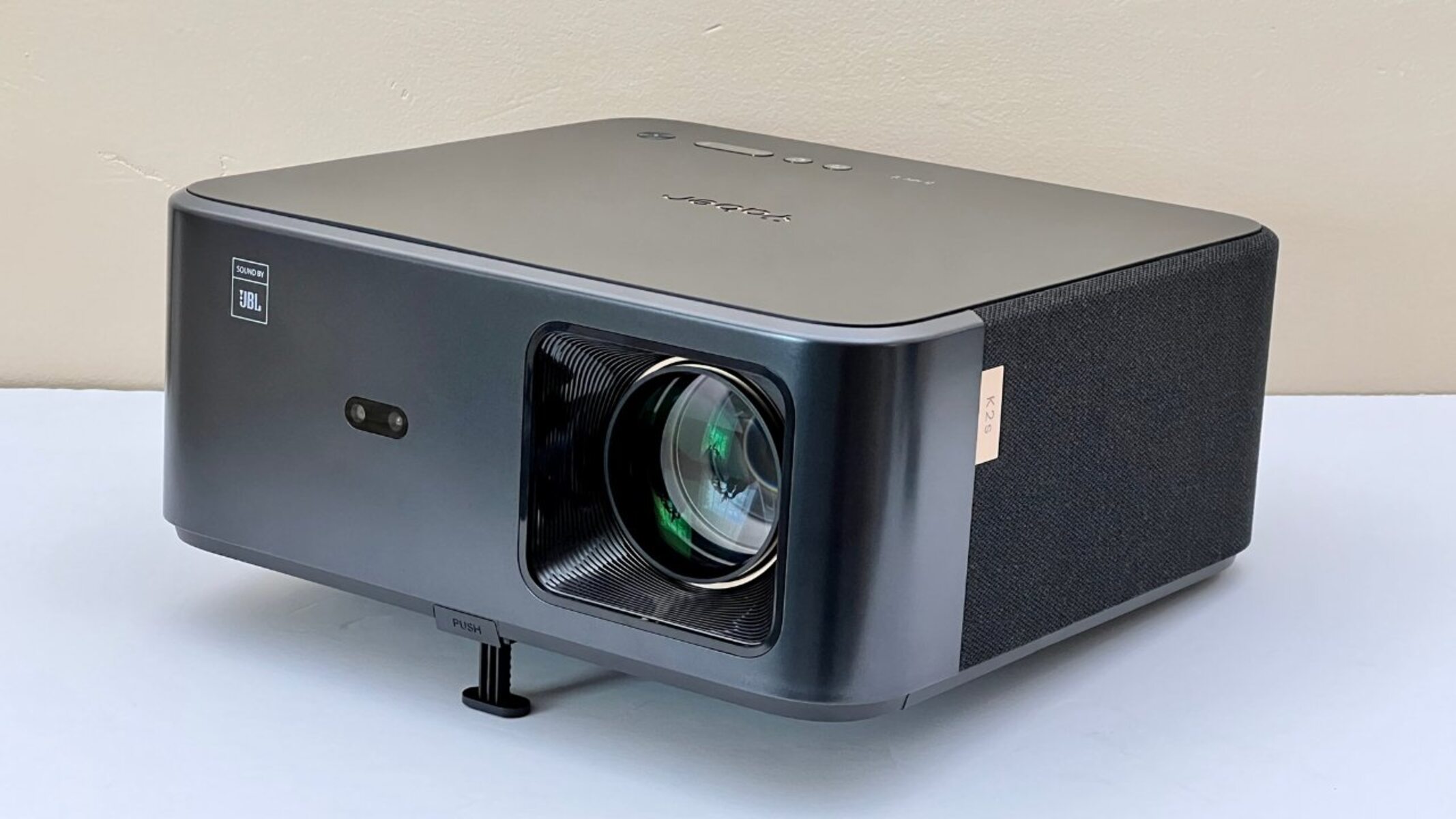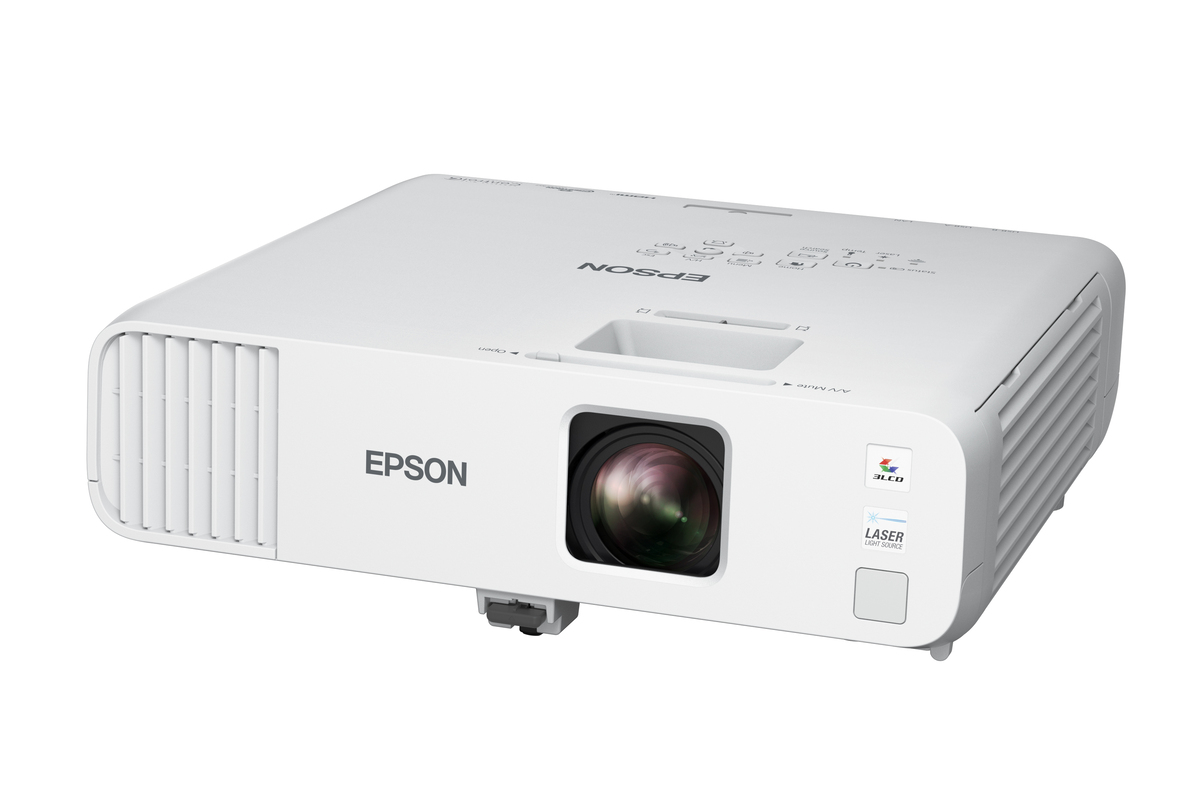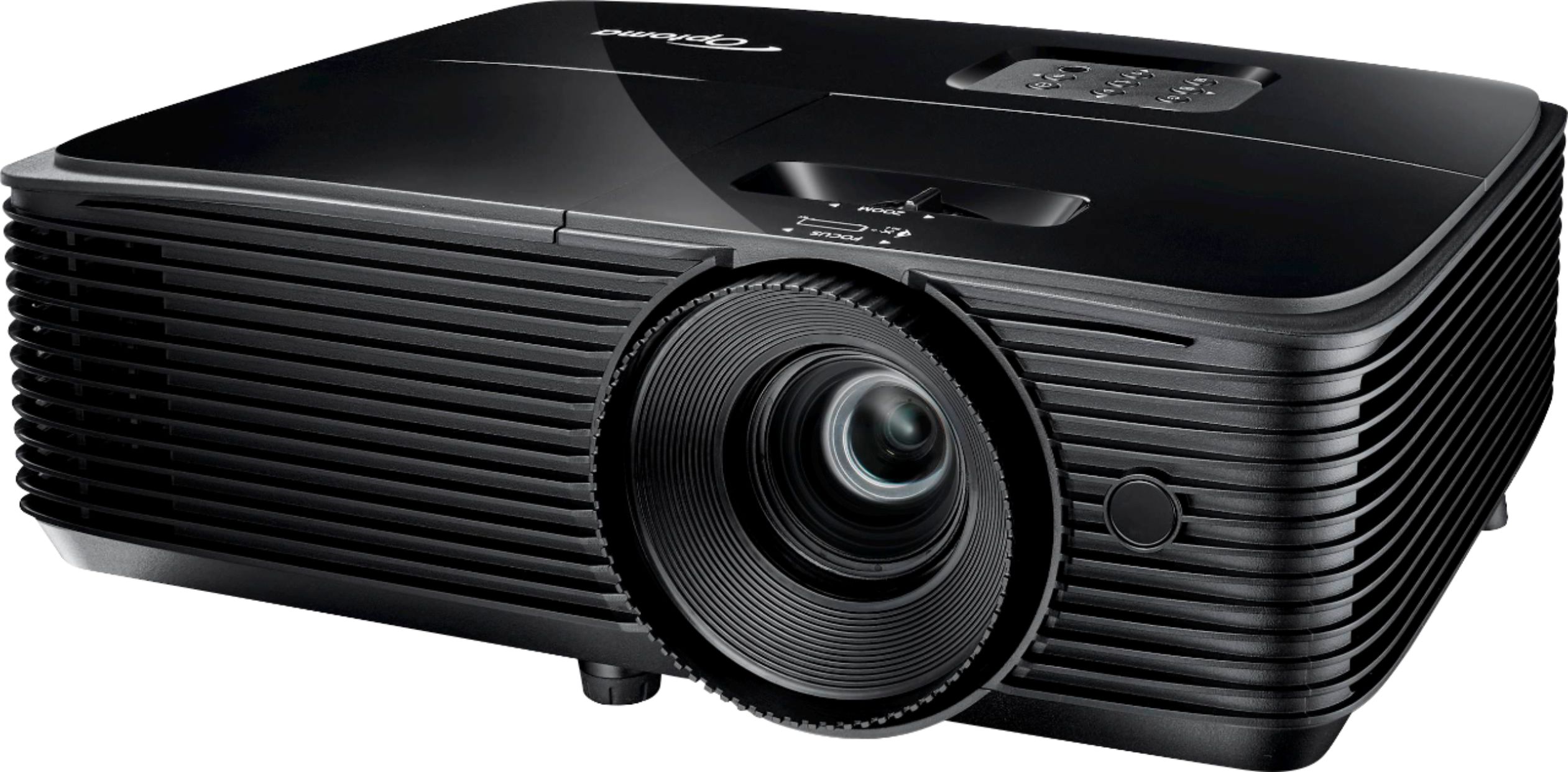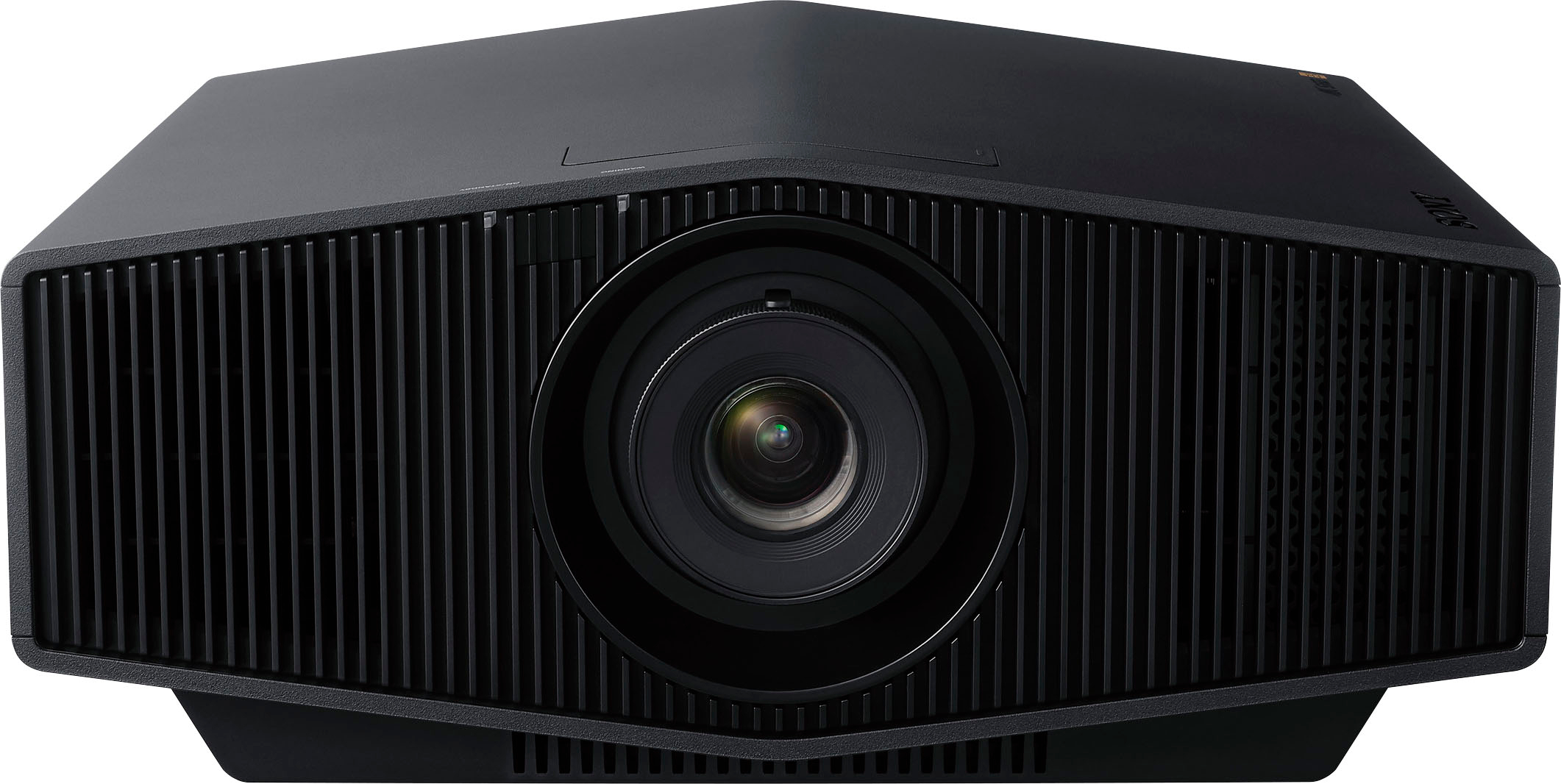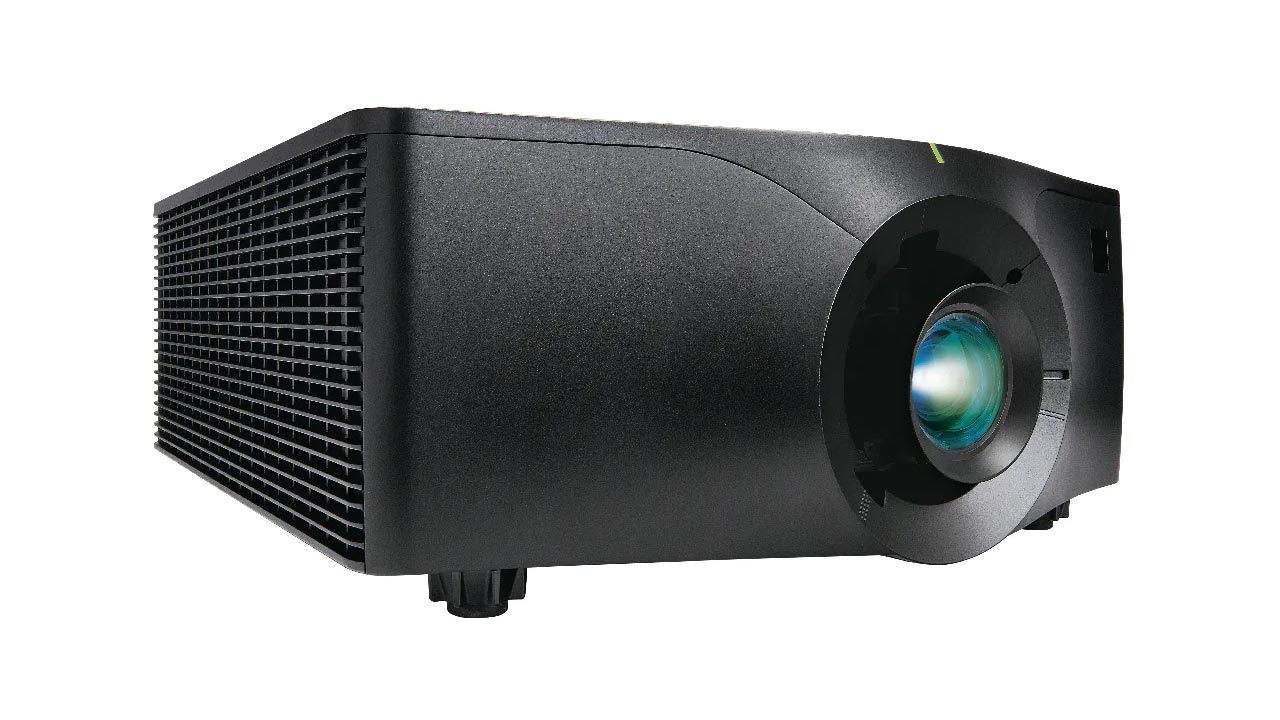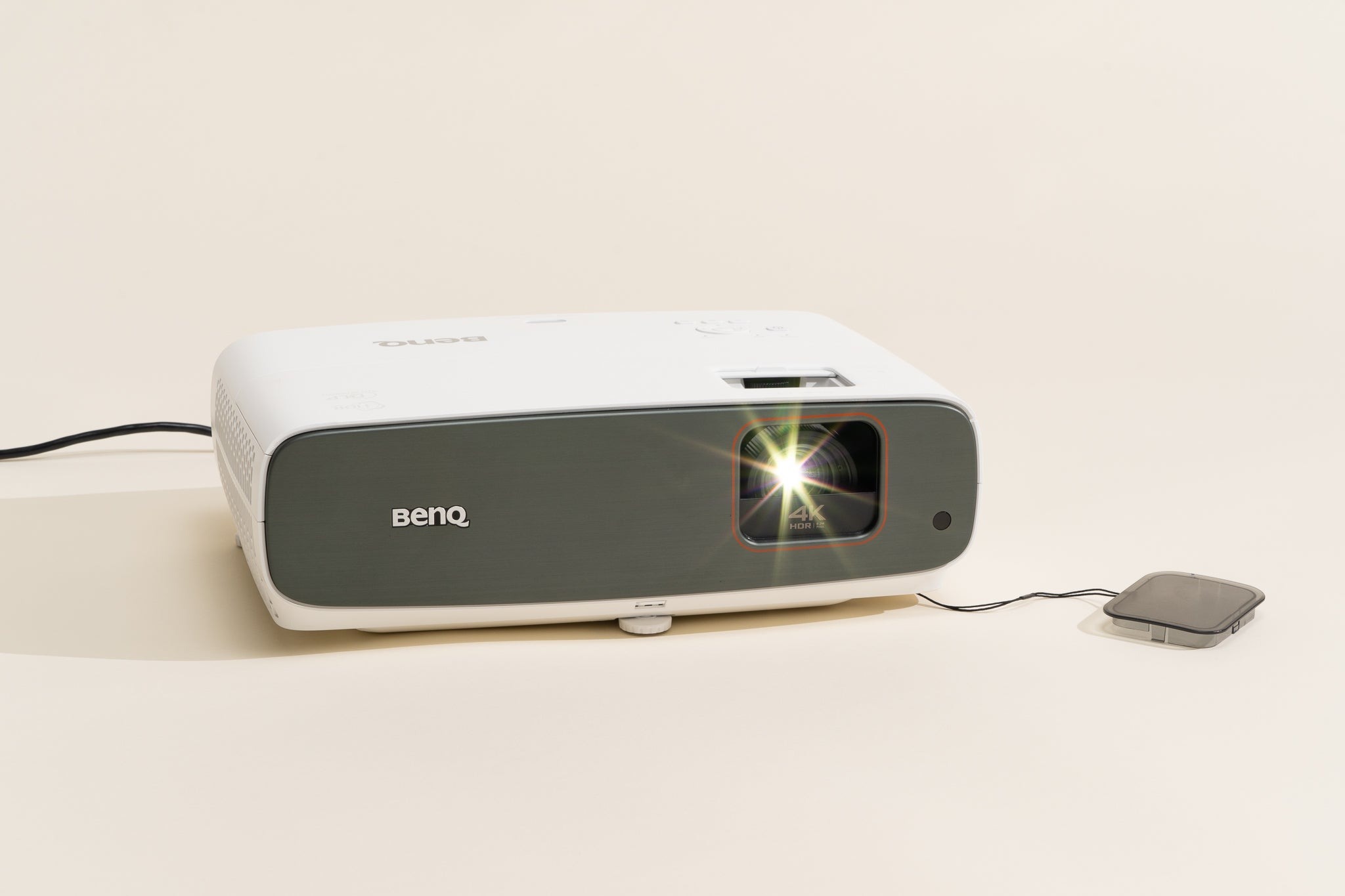Introduction
Welcome to the world of projectors, where images on a screen come to life! Projectors are widely used in education, business, and entertainment settings, providing a larger-than-life viewing experience. Behind the captivating visuals of a projector lies a crucial component: the projector lamp.
A projector lamp is a key element that ensures the quality and brightness of the projected image. However, like any light source, projector lamps have a limited lifespan and will eventually need to be replaced. Understanding how long a projector lamp lasts and how to maximize its lifespan is vital for projector owners.
In this article, we will explore the various factors that determine the lifespan of a projector lamp. We will also discuss the manufacturer specifications for lamp lifespan and provide tips on how to extend the lifespan through regular maintenance. Additionally, we will highlight common signs that indicate your projector lamp may be nearing its end, and guide you through the steps to replace it.
So, if you are a projector owner or planning to invest in one, keep reading to discover everything you need to know about projector lamps and how to get the most out of them.
Understanding Projector Lamps
To truly grasp the lifespan and importance of a projector lamp, it’s essential to understand its role in the projection process. Projector lamps, also known as projector bulbs, are the light source that provides the necessary illumination to project the image onto a screen or surface.
Projector lamps are typically made of a high-intensity discharge (HID) bulb, which contains a tungsten filament and various gases. When an electric current passes through the filament, it heats up and produces an intense light beam. This light beam is then reflected through a series of optical elements, ultimately forming the projected image.
The lifespan of a projector lamp is determined by various factors, including the lamp’s design, power usage, operating temperature, and overall usage time. While the average lifespan of a projector lamp can range from 1,500 to 5,000 hours, it is crucial to note that this figure is an estimation and can vary depending on several factors.
Additionally, it’s worth mentioning that projector lamp lifespan is measured in hours of usage rather than its age. The more frequently the projector is used, the shorter the lifespan of the lamp will be. Therefore, it is important to consider both the number of hours used per day and the total number of days in which the projector is used when estimating lamp lifespan.
Understanding the basic components and operation of a projector lamp can help you appreciate its value and the need to take proper care of it. In the next section, we will delve into the various factors that can affect the lifespan of a projector lamp, allowing you to make the most out of this vital projector component.
Factors Affecting the Lifespan of Projector Lamps
Several factors can significantly influence the lifespan of a projector lamp. Understanding these factors enables projector owners to optimize the longevity of their lamps and ensure optimal performance. Let’s take a closer look at the key factors affecting the lifespan of projector lamps:
1. Usage Time: The most significant factor that affects lamp lifespan is the total number of hours the lamp is in use. The more hours the lamp operates, the shorter its lifespan will be. Projector manufacturers provide an estimated lamp life rating based on the average usage time. It’s important to be aware of and adhere to these guidelines to maximize the lamp’s lifespan.
2. Operating Environment: The environment in which the projector operates plays a crucial role in lamp lifespan. Factors such as temperature, humidity, and dust levels can impact the projector’s internal cooling system and the performance of the lamp. Excessive heat, high humidity, and excessive dust can shorten the lamp’s lifespan. It’s recommended to maintain a controlled and clean environment for the projector to ensure optimal lamp performance.
3. Power Usage: The amount of power consumed by the projector can affect the lamp’s lifespan. Using the projector at lower power modes or eco-mode settings can help extend the lamp’s lifespan. These power-saving settings reduce the lamp’s intensity while still providing satisfactory image quality.
4. Handling and Maintenance: Proper handling and regular maintenance are essential for maximizing the lamp’s lifespan. When handling the projector, avoid touching the lamp with bare hands as this can leave residue and affect its performance. Keeping the air vents clean and ensuring proper ventilation for the projector is also vital to prevent overheating.
5. Lamp Quality: The quality of the lamp itself can affect its lifespan. Genuine and reputable lamp manufacturers often produce higher-quality lamps that have longer lifespans compared to generic or counterfeit alternatives. It’s important to invest in reliable lamp replacements from trusted sources to ensure optimal performance and longevity.
By considering these factors and taking appropriate measures, projector owners can prolong the lifespan of their lamps, reducing the frequency of replacements and maintaining a consistent image quality throughout the projector’s usage. In the next section, we will explore the manufacturer specifications for lamp lifespan, providing a useful reference for projector users.
Manufacturer Specifications for Lamp Lifespan
When it comes to projector lamps, manufacturers provide specific ratings and specifications regarding their lifespan. These guidelines are crucial in helping projector owners understand the expected longevity of their lamps. Here are some key aspects to consider:
1. Lamp Life Rating: Projector lamp lifespan is typically measured in hours and is specified by the manufacturer. The lamp life rating represents the estimated number of hours the lamp can be expected to operate before it needs replacement. This rating serves as a useful reference to plan for future lamp replacements.
2. Normal Mode vs. Eco-Mode: Manufacturers often provide two lamp life ratings based on different operating modes: normal mode and eco-mode. Normal mode represents the lamp’s lifespan when the projector is used at its regular power and brightness settings. Eco-mode, on the other hand, offers a lower power consumption setting, resulting in a longer lamp lifespan. It’s important to consider these ratings when deciding on the preferred operating mode for your projector.
3. Lamp Warranty: Manufacturers may also provide a warranty period for projector lamps. This warranty period ensures that the lamp is free from defects and will operate within the specified lifespan. Understanding the warranty coverage and duration is essential for potential lamp replacements or claims within the given timeframe.
It’s important to note that manufacturer specifications for lamp lifespan are based on ideal operating conditions. Factors such as usage patterns, operating environment, and power settings can affect the actual lifespan of the lamp.
While the manufacturer’s specifications offer valuable information, it’s essential for projector owners to consider their individual usage patterns and conditions when estimating the actual lifespan of their lamps. Timely maintenance, proper lamp handling, and adherence to operating guidelines can help maximize the lamp’s lifespan and ensure optimal performance.
In the next section, we will explore regular maintenance practices that projector owners can undertake to extend the lifespan of their lamps and maintain excellent image quality.
Regular Maintenance to Extend Lamp Lifespan
To ensure the longevity of your projector lamp and maintain optimal performance, regular maintenance practices are essential. By following these simple steps, you can extend the lifespan of your lamp:
1. Cleaning: Regularly clean the projector and its air vents to prevent dust accumulation. Use a soft, lint-free cloth or a projector-specific cleaning kit to gently wipe away any dust or debris. A clogged air vent can lead to overheating, which can significantly impact the lamp’s lifespan. Clean the projector periodically and ensure it is well-ventilated for optimal cooling.
2. Operating Environment: Maintain an ideal operating environment for the projector. Avoid exposing it to excessive heat, cold, or humidity. Extreme temperatures and moisture can damage the lamp and other components of the projector. Keep the projector in a well-ventilated space with proper temperature and humidity control.
3. Power Cycling: When not in use, it’s a good practice to power off the projector completely. Frequent power cycling helps reduce the wear and tear on the lamp. Avoid leaving the projector in standby mode for extended periods as this can still put strain on the lamp and reduce its lifespan.
4. Use Eco-Mode: Most projectors offer an eco-mode or power-saving mode option. Eco-mode reduces the brightness of the lamp, resulting in lower power consumption and extended lamp life. Whenever feasible, switch to eco-mode to maximize the lifespan of your lamp while still maintaining acceptable image quality.
5. Proper Lamp Handling: When replacing or handling the projector lamp, follow the manufacturer’s instructions carefully. Avoid touching the lamp with bare hands, as oil and residue from the skin can cause hotspots and affect the lamp’s performance. Use gloves or a clean cloth to handle the lamp and ensure a secure installation in the projector.
By incorporating these regular maintenance practices into your projector care routine, you can significantly extend the lifespan of your lamp. Remember, a well-maintained projector not only optimizes lamp performance but also delivers a consistently high-quality viewing experience.
In the next section, we will discuss the signs that indicate your projector lamp may be nearing the end of its lifespan, helping you prepare for a replacement in a timely manner.
Signs That Your Projector Lamp May Be Nearing the End of Its Lifespan
As a projector owner, it’s essential to be aware of the signs that indicate your lamp is nearing the end of its lifespan. Recognizing these signs allows you to plan for a replacement and avoid unexpected interruptions. Here are some common indications that your projector lamp may need replacing:
1. Dimming Image: If you notice a gradual decrease in the brightness of the projected image, it may be an indication that the lamp is nearing the end of its lifespan. As the lamp ages, its brightness output tends to diminish. If your projector is no longer producing a crisp and vibrant image, it may be time to replace the lamp.
2. Flickering or Unstable Image: A flickering or unstable image is another sign of a dying lamp. If the projected image starts flickering, fluctuating in brightness, or displaying irregular patterns, it could be an indication that the lamp is reaching the end of its life. This can interfere with your viewing experience and signal the need for a replacement.
3. Increased Noise or Fan Speed: As the lamp nears the end of its lifespan, it may cause the projector’s fan to work harder to cool the lamp. This can result in increased noise or higher fan speeds. If you notice a significant increase in fan noise or the projector becoming excessively hot, it may be a sign that the lamp is deteriorating and needs to be replaced.
4. Lamp Warning Lights: Many projectors have built-in warning lights or indicators that alert you when the lamp is due for replacement. These lights may blink or change color to signal the lamp’s deterioration. Refer to the projector’s manual or consult the manufacturer’s website to understand the specific indications provided by your projector.
5. Lamp Usage Hours: Most projectors have a lamp usage hour counter that keeps track of the total hours the lamp has been used. Check this counter periodically to monitor the lamp’s usage. If the lamp has reached or exceeded its estimated lifespan, it is a strong indication that a replacement is needed.
By monitoring these signs and staying aware of your projector’s performance, you can anticipate when it’s time to replace the lamp. Planning for a replacement in advance ensures uninterrupted projection capabilities and maintains excellent image quality.
In the next section, we will guide you through the steps to replace a projector lamp, helping you navigate the process smoothly and effectively.
Steps to Replace a Projector Lamp
Replacing a projector lamp may seem like a daunting task, but with the right guidance, it can be a straightforward process. Here are the general steps to follow when replacing a projector lamp:
1. Prepare: Begin by reading the projector’s manual or referring to the manufacturer’s instructions specific to your projector model. Familiarize yourself with the lamp replacement process and any precautions or recommendations provided.
2. Power Off and Cool Down: Ensure that the projector is turned off and has had sufficient time to cool down. This is crucial to avoid any potential heat-related accidents during the lamp replacement process.
3. Access the Lamp Compartment: Locate the lamp compartment on your projector. It is usually indicated by an icon or a specific section on the projector’s body. In some cases, you may need to remove a panel or unscrew a cover to access the lamp compartment.
4. Remove the Old Lamp: Once the lamp compartment is accessible, carefully remove the old lamp by following the manufacturer’s instructions. Pay attention to any locking mechanisms or screws that need to be loosened or removed to release the lamp.
5. Install the New Lamp: Take your new lamp, making sure it is the correct replacement for your projector model, and carefully insert it into the lamp compartment. Ensure that it is securely seated and aligned correctly according to the manufacturer’s instructions.
6. Secure and Replace Components: Once the new lamp is in place, reattach any screws or locking mechanisms to secure the lamp in the compartment. Double-check that everything is properly secured before proceeding.
7. Reset Lamp Timer: If your projector has a lamp usage hour counter or timer, reset it to reflect the new lamp installation. This step is crucial to ensure accurate monitoring of the lamp’s usage and lifespan.
8. Close Lamp Compartment: Once all the necessary steps are completed, carefully close the lamp compartment, ensuring that it is firmly sealed and any panels or covers are securely in place.
9. Power On and Test: Turn on the projector and test it to ensure that the new lamp is functioning correctly. Observe the image quality, brightness, and any potential warning lights or indicators that may require attention.
Remember, it’s important to follow the specific instructions provided by your projector’s manufacturer for the best results. If you encounter any difficulties or have concerns about the lamp replacement process, don’t hesitate to consult a professional or contact customer support for further assistance.
Now that you’re equipped with the knowledge of replacing a projector lamp, you can confidently maintain your projector’s performance and continue enjoying exceptional image quality.
Conclusion
Projector lamps play a crucial role in delivering vivid and captivating visuals in educational, business, and entertainment settings. Understanding the lifespan of a projector lamp and taking appropriate measures to maximize its longevity is essential for projector owners.
In this article, we explored the various factors that can affect the lifespan of a projector lamp, including usage time, operating environment, power usage, lamp quality, and maintenance practices. By considering these factors and implementing regular maintenance routines, projector owners can extend the lifespan of their lamps and ensure optimal performance.
We also discussed the significance of manufacturer specifications for lamp lifespan and how they serve as a guideline for projector users. Understanding these specifications helps projector owners plan for future lamp replacements and make informed decisions regarding power usage and operating modes.
Recognizing the signs that indicate a lamp is nearing the end of its lifespan is crucial in avoiding unexpected interruptions. Dimming image quality, flickering or unstable images, increased noise or fan speed, and lamp warning lights are all indicators that a replacement is needed.
Furthermore, we provided a step-by-step guide on how to replace a projector lamp, enabling projector owners to navigate the process effectively. By following these steps and referring to the manufacturer’s instructions, replacing a projector lamp can be a straightforward task.
As projector owners, it is our responsibility to take care of our projector lamps to ensure optimal performance and prolonged lifespans. By practicing regular maintenance, monitoring usage, and being attentive to the signs of lamp deterioration, we can maximize the lifespan of our projector lamps and continue to enjoy impressive visual experiences.
Remember, each projector model may have specific recommendations and guidelines, so always consult the manual or reach out to the manufacturer for any specific concerns or questions regarding your projector and its lamp.
With these insights and knowledge, you are now equipped to make informed decisions and take the necessary steps to maintain and replace your projector lamp when the time comes, enhancing your overall viewing experience and making the most out of your projector investment.







